Sad fate
Excursion to the destroyed assembly and test building (MIC) at the 112 site of the cosmodrome, where 12 in May 2002 the roof collapsed, burying eight people, the Energiya launch vehicle and the only copy of the Buran that had flown into space.
Here and now everything remains the same, only inside there is no “Buran” any more - as the cosmodrome workers say, it was sawed into pieces and sold like scrap metal. Nobody is going to fix the roof - no one needs a casing anymore. He adjoins, by the way, to the operating assembly shop of NPO Energia, where the G7s are assembled.
At the gates of the destroyed MIC, the eternal monuments of the era are two gigantic transport and installation units (TUA), in which, according to the design, the launch vehicle and the shuttle were to be delivered to the launch site. The weight of each unit is 2750 tons, they moved on special rails using several unique diesel locomotives of the ZMU62P series. Someday, after thousands of years, archaeologists will find these monsters in the desert and will puzzle over what people needed them in the 20th century.
Nature is already taking its own way, the ground in front of the MIC is slowly overgrown with grass that makes its way through the cracks in the concrete slabs.
On the left - the gate of the destroyed MIK. An aggregate (TUA) drove in there, with the help of a crane they loaded “Energy” with “Buran” on its back and then carried it to the launch complex. Aggregates two - it was planned that the launches of "Buran" will occur almost every month, and even more often.
Now this place is surrounded by rusty barbed wire. Aggregates chose the family of stray dogs. They feed nearby - in the canteen of NPO Energia.
View in the opposite direction from the MIC - there, along the rails, the Energia and the Buran left for the launch site. The white tower on the left is a test bench for a shuttle boom.
It takes a long time to go from the MIC to the launch complexes, the distances here are large. The road goes along the railroad track, along which the “Energy-Buran” complex was moving.
The launch complex, from where it flew off to its first and only flight, the Buran. There is no one there now, the complex is mothballed and guarded by the security service of the cosmodrome. They try to protect here everything that has not yet been taken away. The territory of the cosmodrome is enormous, and earlier from the steppe, the local population periodically attacked it in the hope of profit from something useful on the farm, which could be turned into scrap metal.
Nearby is the twin brother of the starting complex "Energy-Buran". It is completely abandoned and seems to be not fully completed. There should be four such sites altogether, but the last, the fourth, was only just being built when the program was closed. The sites for the launch of Buran are well defined by the pipes of the emergency evacuation of cosmonauts (AEE). It consists of an inclined elevator for loading / unloading the crew and a tray for emergency evacuation.
From here flew "Buran".
General view of the two launch complexes for the "Buran".
We went to the place of the first start of "Energy", to the 250 platform. On this concrete panel, a starter "Energy" is drawn with a prototype of a combat laser space platform "Pole" on its back. The "Pole" then was never launched into a given orbit and was submerged in the Pacific Ocean.
Along the road stretched the remnants of the gallery with communications and pipelines for the launch complex. The whole program "Energy-Buran" was designed for military purposes, the military worked here, hence the slogans on the walls of the gallery.
General view of the launch complex "Energy" on the site 250a. Here 15 May 1987, the first launch of the new launch vehicle was carried out.
No photo can convey, of course, how far this launch complex is a gigantic structure, overwhelming in its size. The height of this service tower is over 100 meters. The mast of lightning rods nearby is much higher.
There is a shortage of a human figure for scale, but you can navigate along the width of a usual railway gauge known to you - here they are, one and two. On this road they brought “Energy” from the MIC to the start, which is not even visible from here. Left in the distance are the launch sites of the Buran.
The gas outlet tray is also striking in its size - it is several times larger than that of the “Gagarinsky” launch, from where the Unions fly into space.
Starting table "Energy". Iron constructions with "steps" - lighters of the launch vehicle engines. The water cannons are visible - before the launch of the rocket, Baikonur saved up several weeks of water, for which such a launch would take several thousand tons.
View of the launch pad from above. Round metal blanks (where there is torn fabric) are supports for the launch vehicle. “Seven” at the start hangs on special hooks, like a coat on a hanger - for Energia they invented another system, the rocket, after withdrawing the maintenance farms, remained standing on these round stands.
Another giant piece of iron is a mobile service tower.
Types of starting complex "Energy":
During construction, the entire site of the complex was laid out with such metal tiles:
During the first launch of Energia, the rocket bent a little and the jet of hot gases in an instant blew off the entire cover. Until now, traces of scattered metal tiles are visible on iron bases.
The launch complex at the 250 site is conserved. The chemical productions built alongside are used to make rocket fuel components.
In the courtyard of the museum at the cosmodrome there is one of the Burana test mock-ups.
Inside the cockpit "shuttle":
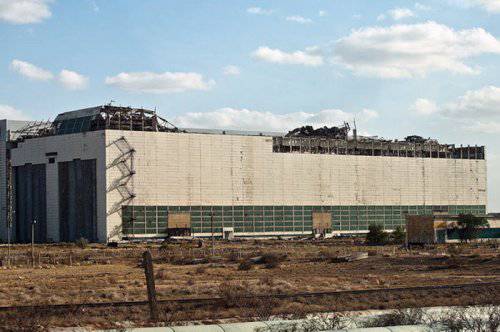
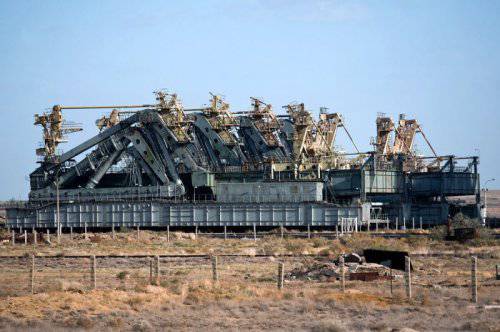
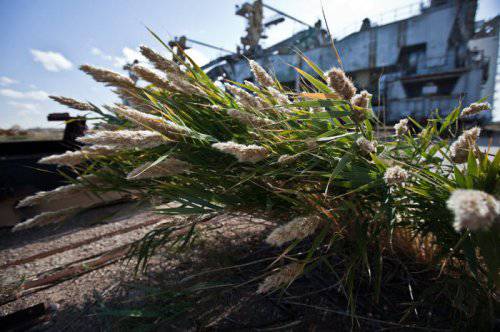
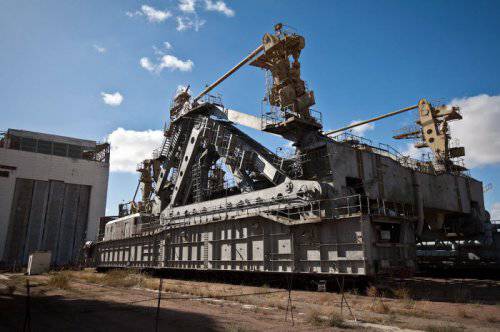
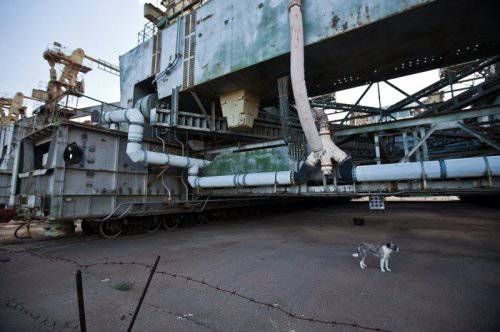
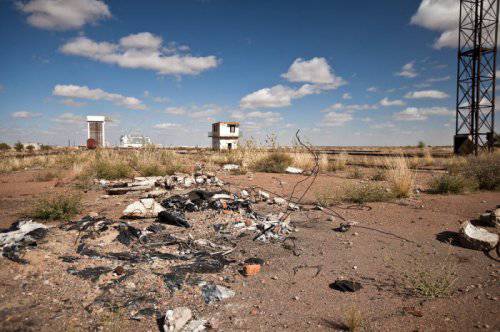
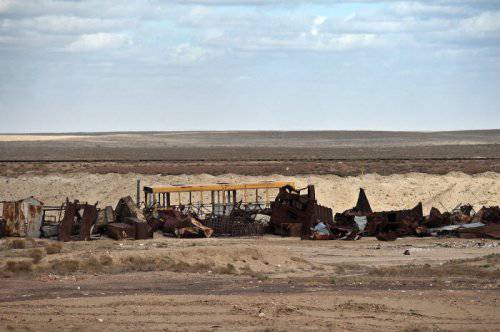
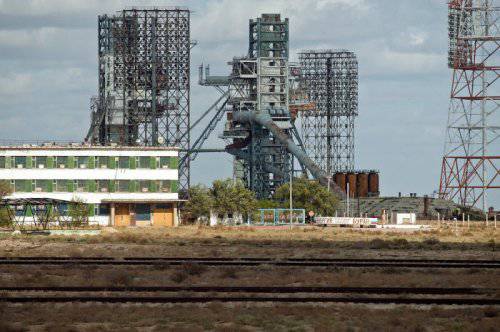
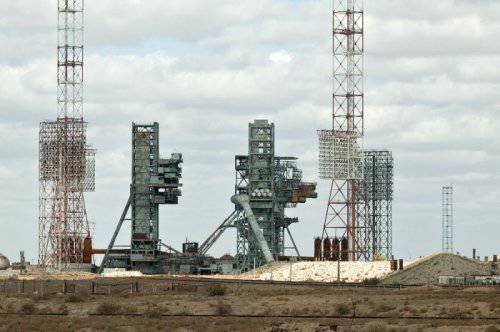
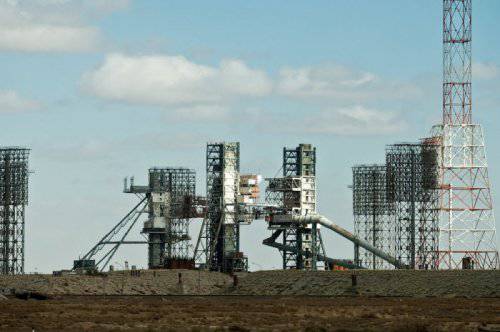
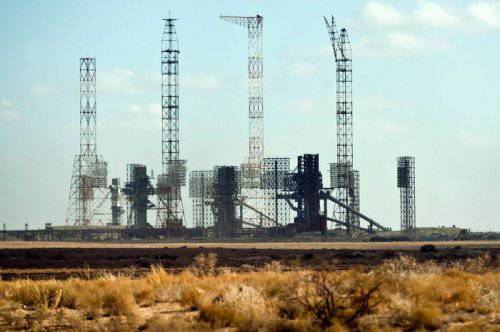
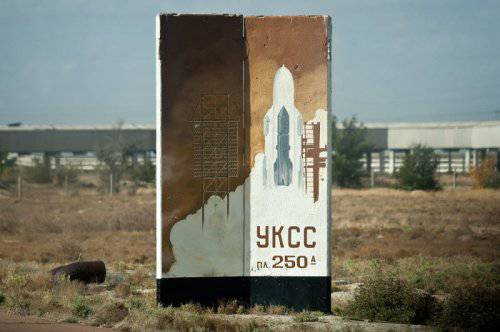
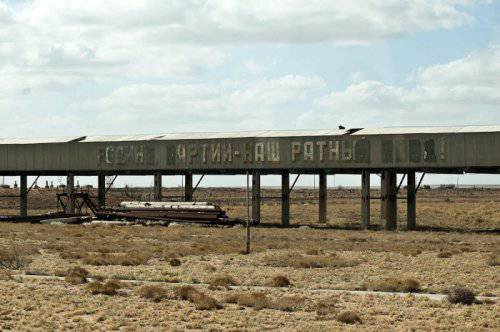
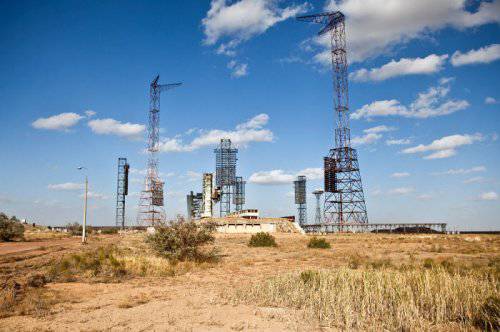
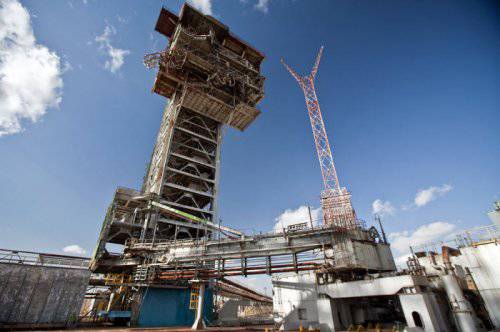
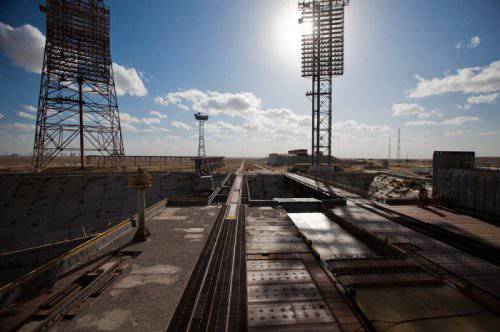
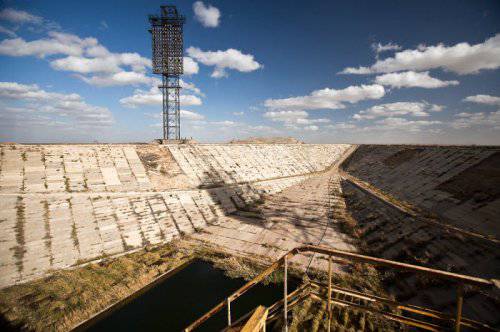
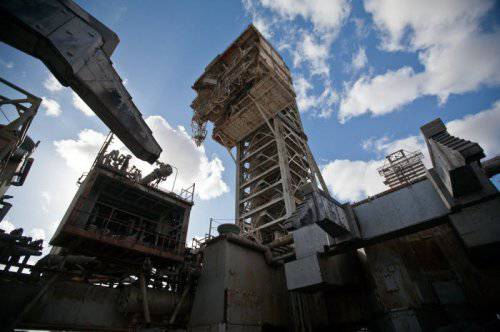
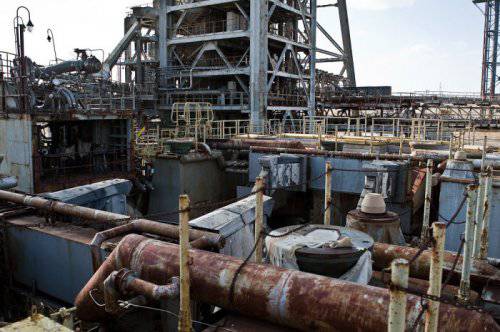
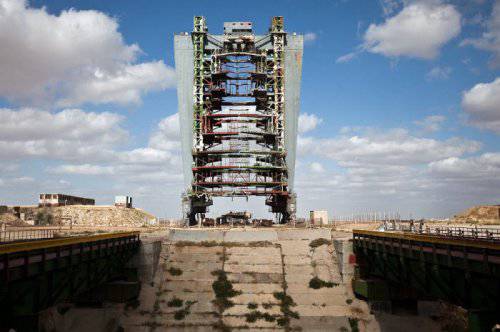
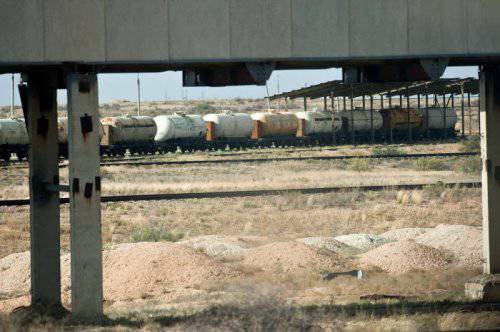
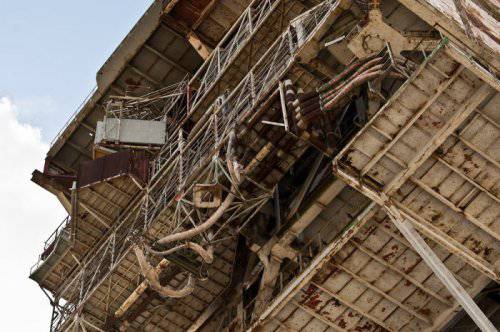
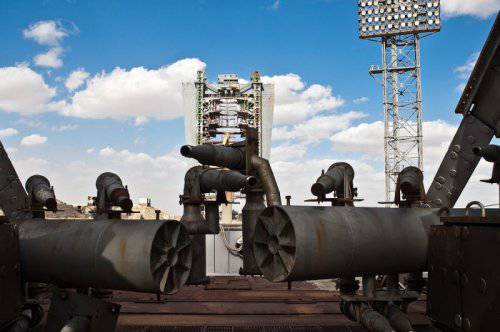
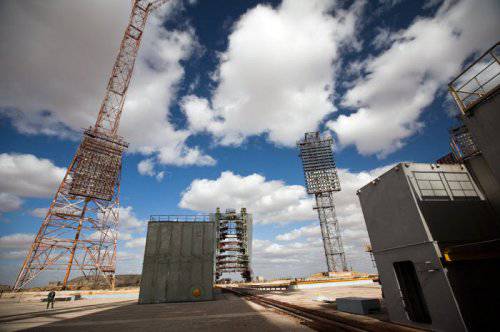
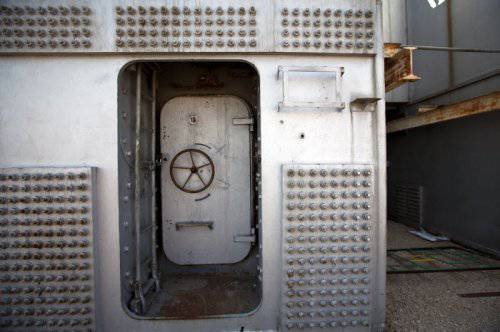
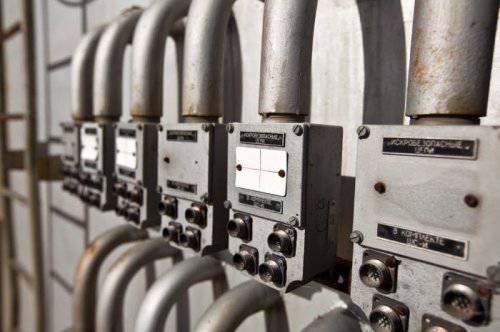
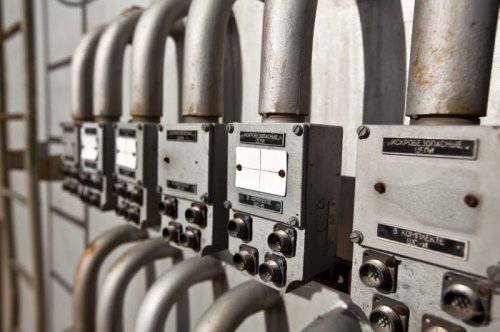
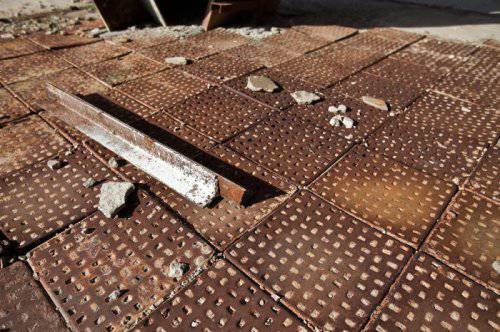
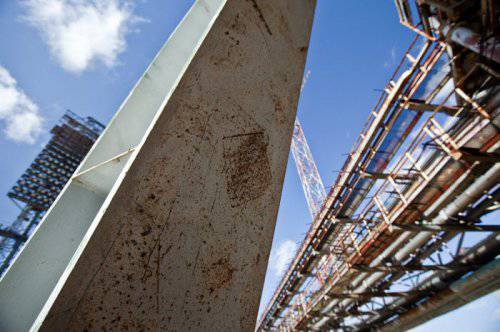
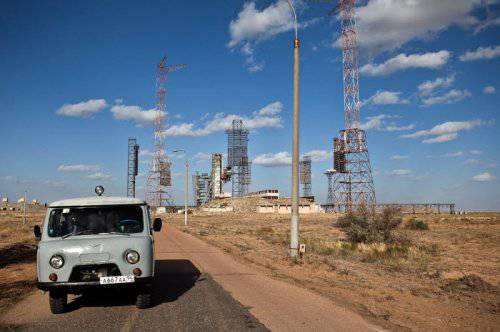
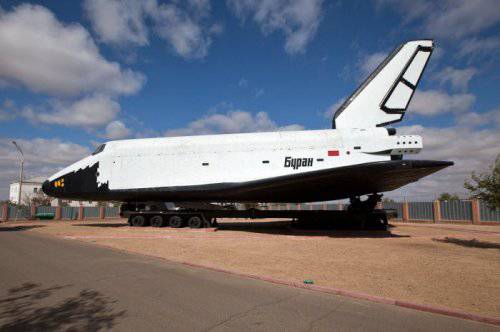
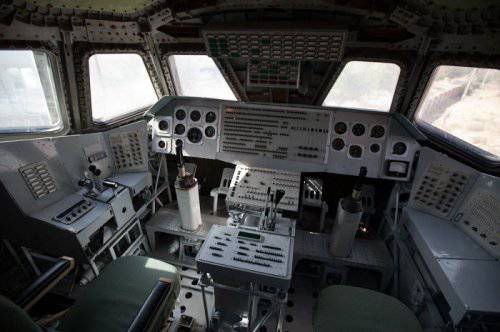
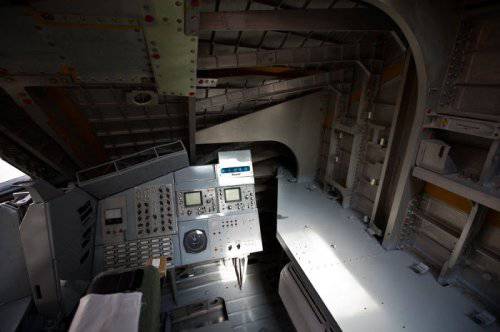
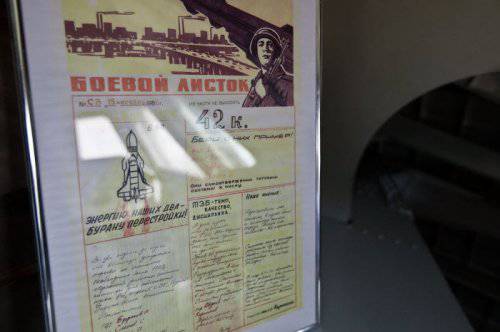
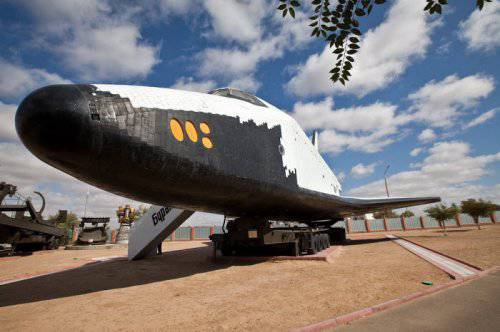
Information